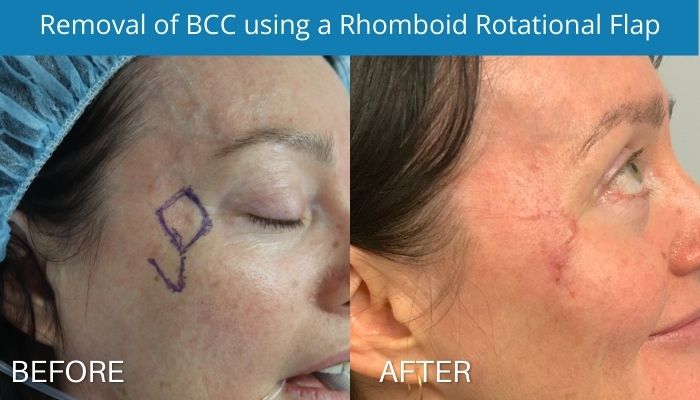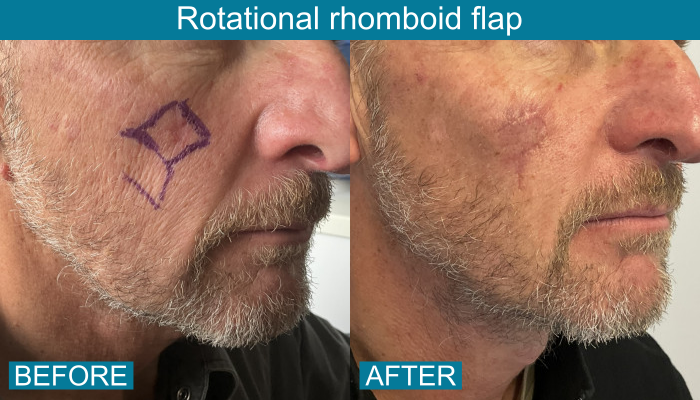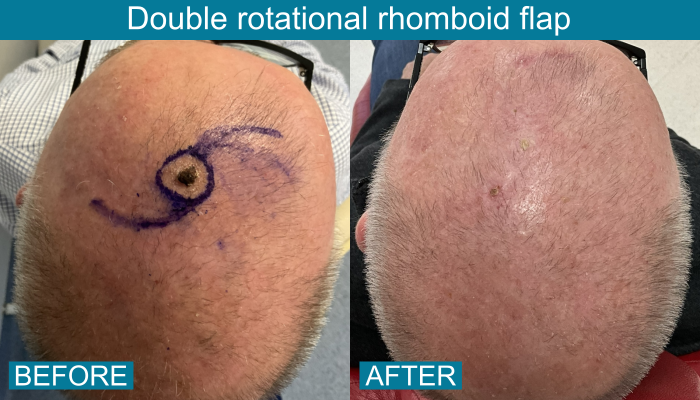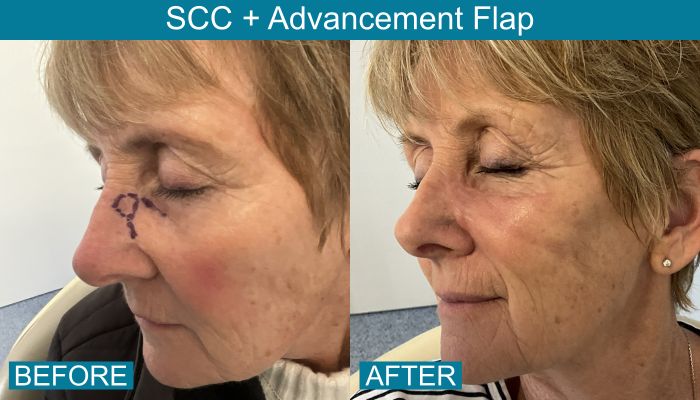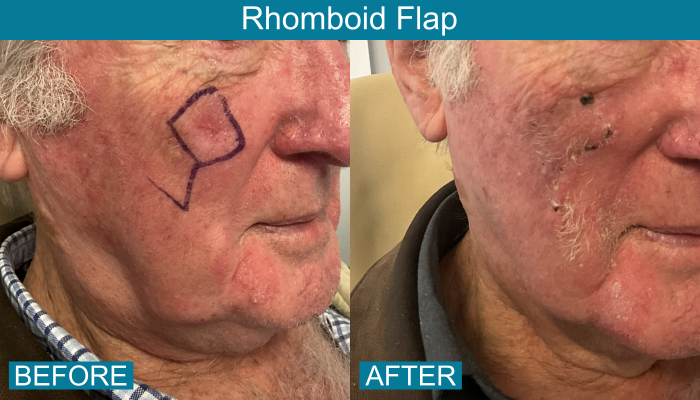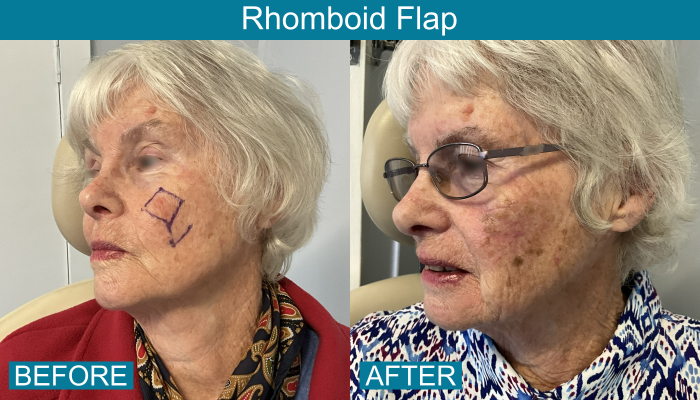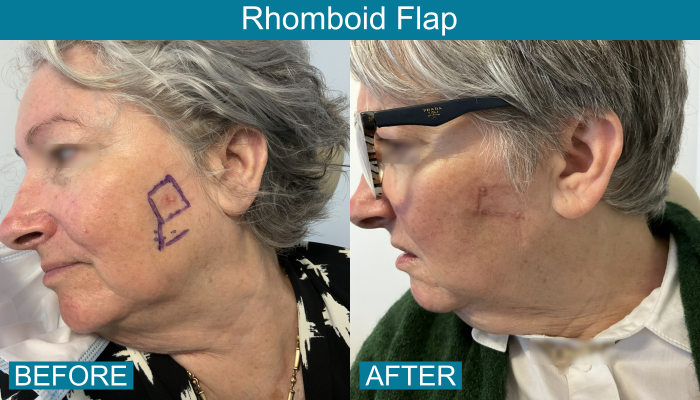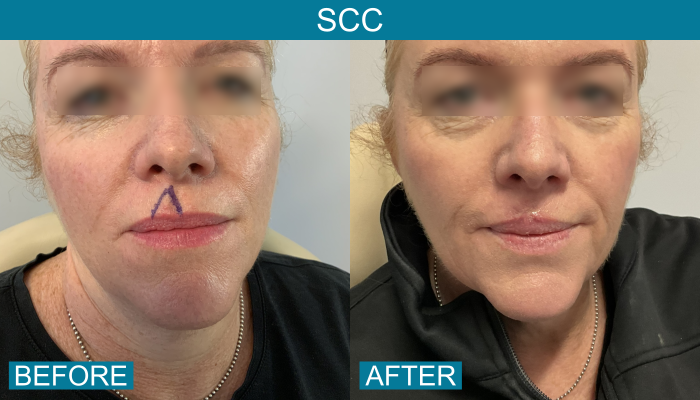Early detection and treatment of skin cancer has been one of the most significant advances in surgery in the past decade. An average skin cancer patient has a “spot” that is changing. Sometimes it is a bump that won’t heal, a mole that changed colour or a sore that is bleeding. Other times it is a mole that is growing, bleeding, or itching.
Common skin cancers include basal cell carcinoma and squamous cell carcinoma (scroll down for more info on both types).
Of all types of skin cancer, basal cell carcinoma is the most common. Fortunately, they tend to grow slowly and remain localised. They frequently appear on sun-exposed parts of the body. Common appearances of a basal cell include a fleshy bump with a pearly surface, a scar-like lesion or a bump that bleeds.
A more severe but less frequent type of skin cancer is known as squamous cell carcinoma. It frequently appears as a scaly, red patch or nodule that grows. Common locations include the nose, ears, hands and scalp (especially in men who have lost their hair). Early diagnosis and treatment is key to preventing any skin cancer from growing into melanoma, which is a potentially fatal disease.
Basal cell carcinoma
Basal cell carcinoma is the most common cancer in humans. Fortunately, they tend to grow slowly and remain localised. Chronic exposure to sun and UV rays are a major contributing factor for all basal cell carcinomas. It is not a coincidence that they tend to occur most frequently on the face, ears, neck, scalp, shoulders and back. Basal cell carcinoma can masquerade as acne bumps, eczema lesions or scars.
Some telling signs that a spot on your skin might be a basal cell carcinoma include: an open sore, a reddish patch, a shiny bump or nodule, a pink growth, and a scar-like area. These lesions tend to bleed and may be itchy. Basal cell carcinoma usually doubles in size every year but is usually curable, especially if detected and treated early.
As with other forms of skin cancer, the age of onset is decreasing and the rate of incidence in women is rising. Basal cell carcinoma skin cancers have increased over the past few decades, and the average age of onset of the disease has steadily decreased.
BIOPSY
If the lesion is suspicious, a biopsy should be performed. During a skin biopsy, a small piece of skin (typically smaller than a pencil eraser) is removed. The procedure uses local anaesthetic and takes a few minutes. The information obtained from the biopsy allows Dr McHugh to decide whether skin cancer surgery is indicated.
EXCISION
Excisional surgery refers to excising (cutting out with a scalpel) a lesion, and then suturing the area to close it. Dr McHugh often uses intra-operative histopathology to evaluate the edges of the tissue removed to determine whether the margins of the specimen are free of cancer.
Squamous cell carcinoma
Squamous cell carcinoma is the second most common skin cancer. It arises from the middle layers of the epidermis and occurs on all areas of the body, including the lips and nails. It is most frequently seen in areas that have been exposed to the sun such as the face, neck, scalp, hands, shoulders, arms and back. Squamous cell carcinomas vary in their behaviour, and the aggressive subtypes can metastasize with fatal outcomes. These lesions usually present as scaly bumps that tend to bleed.
Burns, immune suppression (for example, the use of steroids or drugs for organ transplantation) scars, long-standing sores, radiation and certain chemicals (such as arsenic and petroleum by-products) increase the incidence of squamous cell carcinoma. Squamous cell carcinomas typically appear as scaly bumps that grow or bleed. They usually arise among a field of precancerous growths known as actinic keratoses.
Sometimes, they grow rapidly and are painful (the keratoacanthoma subtype), and sometimes they smoulder.
BIOPSY
If the lesion is suspicious, a biopsy should be performed. During a skin biopsy, a small piece of skin (typically smaller than a pencil eraser) is removed. The procedure uses local anaesthetic and takes a few minutes. The information obtained from the biopsy allows Dr McHugh to decide whether skin cancer surgery is indicated.
EXCISION
Excisional surgery refers to excising (cutting out with a scalpel) a lesion, and then suturing the area to close it. Dr McHugh often uses intra-operative histopathology to evaluate the edges of the tissue removed to determine whether the margins of the specimen are free of cancer.
Skin Cancer Gallery
Before-and-after photos of Skin Cancer removals performed by Dr McHugh

His dual specialisations enable him to deliver excellence in surgical results, with an eye for aesthetic beauty.
With over 20 years of experience as a surgeon in the private sector and performing international aid work as a Surgeon Commander with the Royal Australian Navy, you can have confidence that Dr McHugh is uniquely qualified and trusted to deliver the results you seek.


